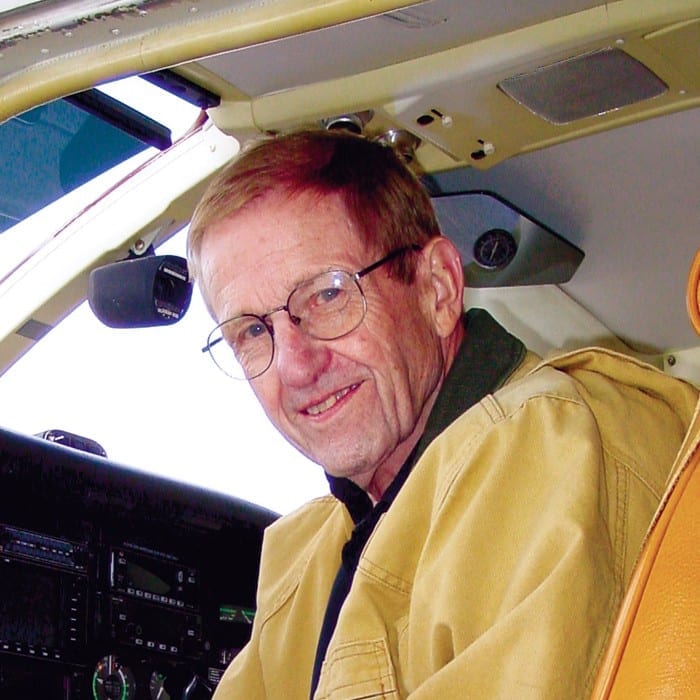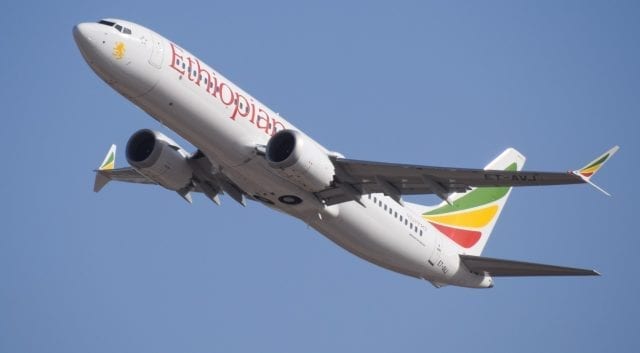
What it means to fly like a pro: 12 habits
John's blogFlying like a professional doesn’t mean you get paid to fly, it doesn’t mean you wear epaulets, and it doesn’t mean you burn Jet A. More than anything, it means you understand the responsibility you have as a pilot and you take pride in how you conduct every flight. Here's how to approach flying with a pro's mindset, and 12 habits for safer flying.

From the archives: The Airphibian
HistoryThis article first appeared in the January 1947 edition of Air Facts. As amazing as it might seem today, Leighton Collins believed back then that flying cars had arrived. He wrote in the headline to this article, "Put it down for keeps that a successful car-airplane is now an accomplished fact." Seventy five years later, flying cars are still in the headlines but not in any garages or hangars. Still, the description of the Airphibian offers a fascinating look at the post-war general aviation boom.

What STOL everybody’s attention?
I was thereIf you keep tabs on current aviation news and social media, you’ve noticed this thing called “STOL” has become popular. Not a day goes by that you don’t see a reference to STOL, a reminder of an upcoming STOL event, or even an image or video of a STOL airplane approaching a gravel bar or a makeshift dirt strip. What is STOL, why is it growing like a wildfire, and how can you learn more about it?

Being sick never felt so good—a whimsical tale of a Viking owner
I was thereIt was an epiphany for me. As though smacked upside the head, I realized I am more than a pilot; more than someone who makes a living operating aircraft. All things aeronautical are part of my DNA. As a kid, I used to fly my fork at the dinner table and plan cross-countries by laying charts out on my bed. I am an aviator!

Breaking news—and breaking the rules
I Can't Believe I Did ThatThe visibility forward decreased gradually, but you could still see the ground. We were able to see Granite Reef, a small diversion dam and the point where the Verde and Salt rivers merge, but continuing further east was becoming a problem. Yet my urge to get the on-air reporter to the news site was strong. After all, that’s what I was getting paid to do.

Grayout at 17,000 feet
I was thereOn Monday, August 13, 2012, I came as close to dying in an airplane as I ever want to. Accidents typically don’t stem from one cause or event. There is usually a series or chain of events that occur where if even one of the links were broken, disaster might have been averted. My case was no different. Looking back on it, I was lucky in spite of a series of events and decisions that contributed to my situation and could have ended very badly.

Flying old school
OpinionI am an Old School pilot. I don’t have a sophisticated, built-in navigational system, nor even an autopilot in our plane. That does not mean I do not know how to fly a 530, but I learned to fly on a float plane on Lake Union in Seattle when I was 19 and the experience formed much of my view of flying.

VFR to IFR in a flash on a solo cross-country
I Can't Believe I Did ThatI can no longer recall if I was aware of an incoming system and thought I could beat it, or it developed quicker than forecast and “caught me” or what. But in a flash, I went from VFR to IFR as if someone had flicked a switch. My first reaction was to see if I would “pop-out” the back, like all of us did/would/still do. But after about 15-20 seconds, my thoughts turned to bugging out.

Startle: what it is and how it affects your performance
TechniqueWhen is the last time you heard “Whoop, Whoop, Pull UP!” or “Wind Shear, Wind Shear!” or a loud bang accompanied by a breathtaking yaw or loss of thrust? Have you been in 90 degrees of bank on final following that Gulfstream? The Greeks survived as the underdogs for centuries. In aviation you never know when YOU will be the underdog. How far will you fall before your training catches you?

What to practice with limited flying time
TechniqueNo matter what you fly or why, you’re certainly doing less flying now as the country tries to survive the Covid-19 virus. So how can we get the most effective practice and proficiency retention out of the limited flying we can do? Practicing landing is important, for sure, but I think there are some other maneuvers that can test and refine your skills more effectively in less flying time.

Why upset training just doesn’t work
OpinionDuring my 45 years of observing and writing about aviation, pilot upset training is a topic that has waxed and waned. For the past few years the idea of learning how to recover from an extreme attitude is in ascendance. But the reason upset training emphasis falls in and out of favor is because it just doesn’t work.

Blue camouflage rocket ride – my flight in an L-39
I was thereI flew the L-39 jet, a former Russian military jet trainer, in Santa Fe, New Mexico. The engine is a turbofan, giving it delightful, “push you back against the seat” power when you go to full throttle. Larry Salganek, master aviator and chief instructor, flew with me of course. I flew it from start to finish, Larry bravely never touching the controls, just offering advice through the hot mic.

What I learned from Richard Collins
John's blogOne year ago, aviation lost a legend. Richard Collins left behind such a huge volume of writing over his 60+ year career that pilots will find rich rewards from re-reading his work. In general, the lessons he reminds me of seem to center around four main ideas: building margins, managing weather, respecting technology, and flying for transportation.

737 MAX crashes raise questions about design, testing, certification – and training
OpinionIt’s becoming more evident that the 737 MAX Lion Air and Ethiopian Airlines crashes implicate airplane design, flight testing, and certification. And regardless of how crew performance in these events is eventually adjudged, there’s a growing consensus that airline pilot training is an important issue that needs addressing.

Student flight control jam
I was thereThis particular day Al was flying on his third hour of supervised solo, meaning these solo flights needed to be approved by me beforehand. Perhaps 20 minutes after his takeoff, Al called on the Unicom frequency: “Bob, I’ve got trouble with the controls.” I responded quickly. “What’s the trouble, Al?”“I can’t move the control wheel forward or back. It’s stuck a little aft of the neutral position.”

The teacher becomes the student
I Can't Believe I Did ThatBob was listening intently while I droned on about the dangers of getting jet fuel pumped in by accident from the wrong truck. “Like this one?” he said as soon as I stopped talking. I looked at the fuel truck sitting right in front of me, pumping fuel in the nose tank as I was speaking, and read the words, JET FUEL, written boldly on the side of the tank.

Flight directors – a fatal attraction
TechniqueThe very design of flight director systems concentrates all information into two needles (or V-bar) and in order to get those needles centered over the little square box, it needs intense concentration by the pilot. Normal instrument flight scan technique is degraded or disappears with the pilot sometimes oblivious to the other instruments because of the need to focus exclusively on the FD needles.

Teaching flying over the years
Dick's blogI became a flight instructor in 1953. I last renewed my CFI in 2016 and will let it lapse today (2/28/2018). There is no log entry for that because there was no flight. I’ll tell you why I let it lapse in a bit. For now, I’ll just say that it has to do with the FAA at its petty and officious best.

From the archives: Leighton Collins flies a Lear 24
Air Facts ArchivesIn this trip into the Air Facts archives, ride along with Leighton Collins as he gets a familiarization flight in a Lear Jet 24 in 1967. With a variety of small jets hitting the market in recent years, from the Cirrus Jet to the Eclipse, many of Collins’s reactions to flying a powerful jet 50 years ago might sound familiar. Collins concludes, "they’ve really got themselves a show horse in the Model 24."

My Bonanza is a time and dimension machine
OpinionBonanza N3255V, born in 1947, is the machine that allows us to enter a world that I still struggle to get my head around. It is a world of possible extreme juxtapositions. We climb into the aluminum tube, go up into the air, and whisk across the planet to land anywhere we choose and instantly enter a different world – not forgetting the experience along the way.
